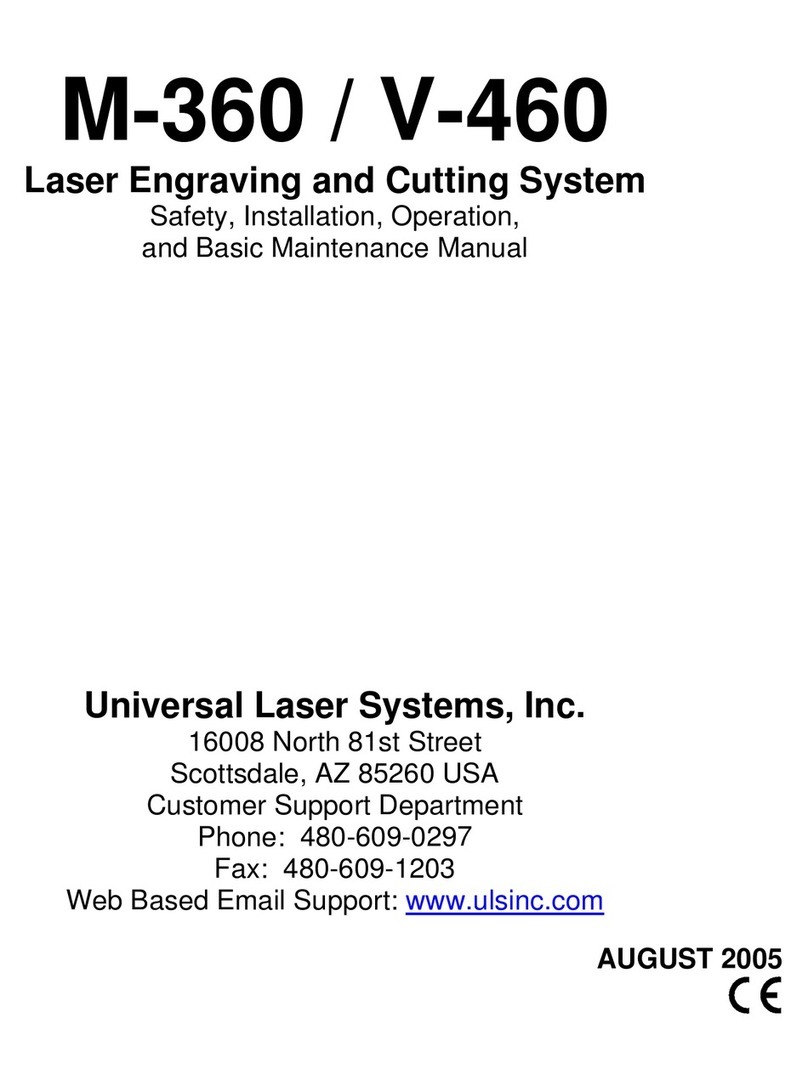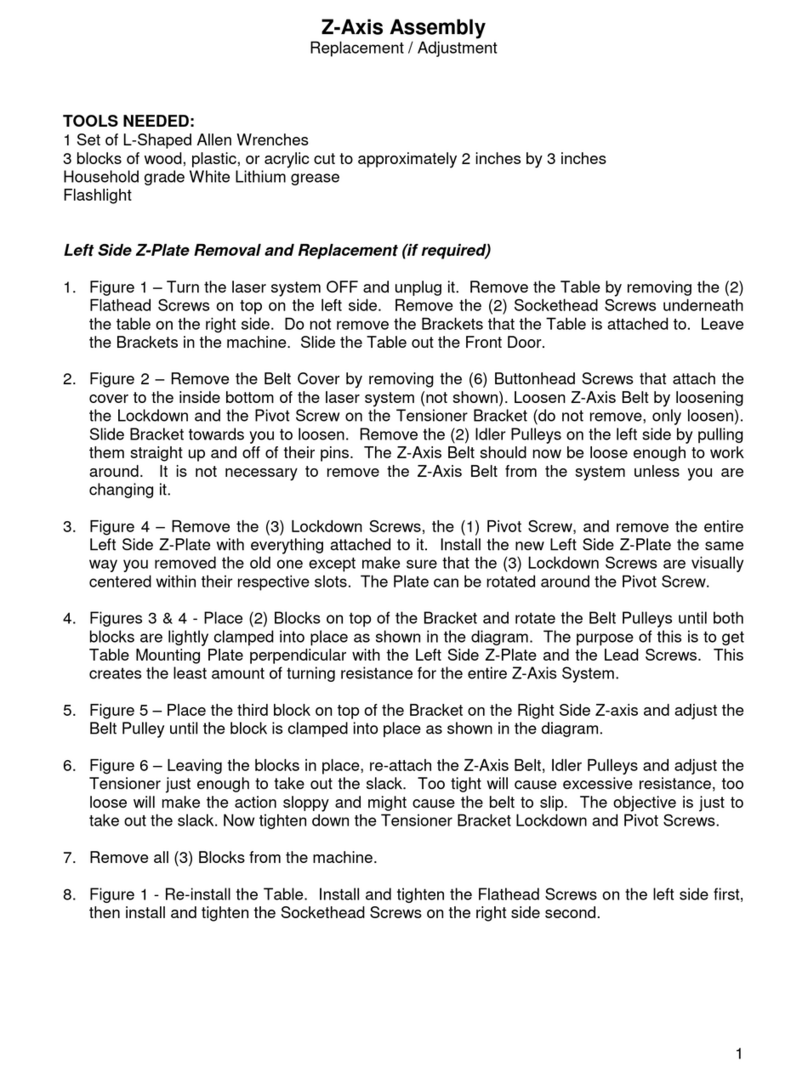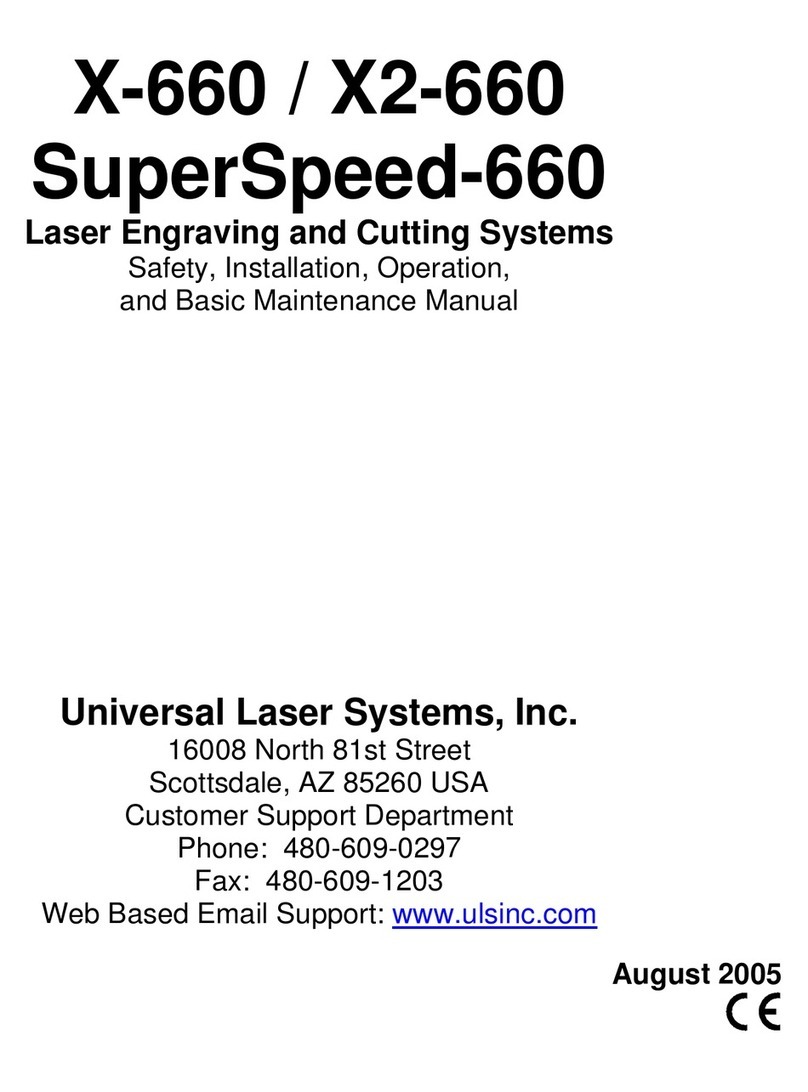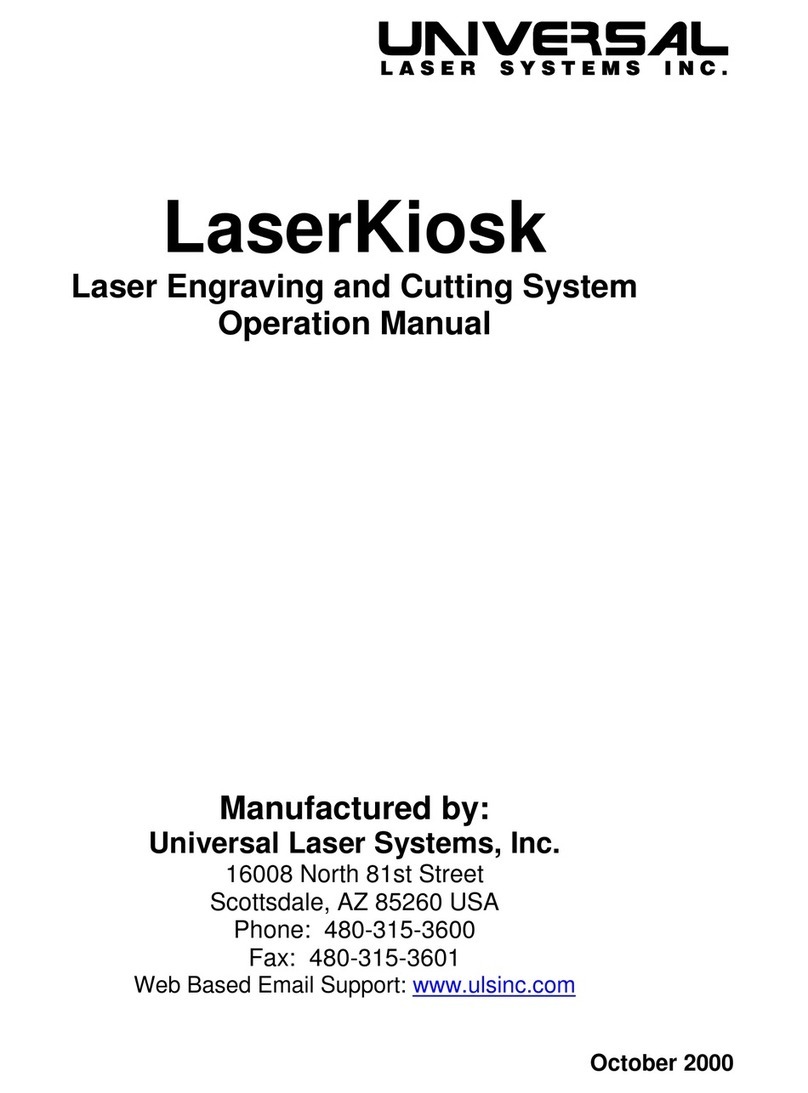Table of Contents
Section 1 - Safety
Description of Appropriate Use .....................................................................................1-1
General Safety .............................................................................................................1-1
Laser Safety.................................................................................................................1-1
Safety Labels ...............................................................................................................1-2
EU Compliance (CE) ....................................................................................................1-4
FCC Compliance ..........................................................................................................1-5
Section 2 - Installation
System Operating Environment Requirements .............................................................2-1
System Assembly ........................................................................................................2-3
Finalizing the Connections ...........................................................................................2-6
Printer Driver Installation ..............................................................................................2-7
Section 3 – Basic System Operation
The Control Panel ........................................................................................................3-1
The Menu System ........................................................................................................3-2
Focusing Methods ........................................................................................................3-5
Making a Sample, Step-by-Step ...................................................................................3-7
How it All Works ...........................................................................................................3-9
Section 4 - Basic Maintenance
Motion System Components Diagram ..........................................................................4-1
Cleaning and Maintenance Supplies ............................................................................4-2
System Cleaning and Maintenance ..............................................................................4-2
Maintenance Schedule .................................................................................................4-5
Troubleshooting ...........................................................................................................4-6
Section 5 – Material Settings Guide
Acrylic – Cast and Extruded .........................................................................................5-4
Acrylic - Mirrored ..........................................................................................................5-6
Aluminum - Anodized ...................................................................................................5-8
Brass – Painted............................................................................................................5-9
Corian / Avonite / Fountainhed ................................................................................... 5-10
Cork ........................................................................................................................... 5-11
Delrin ......................................................................................................................... 5-12
Glass/Crystal ............................................................................................................. 5-13
Leather ...................................................................................................................... 5-14
Marble ....................................................................................................................... 5-15
Mat Board .................................................................................................................. 5-16
Melamine - Standard .................................................................................................. 5-17
Melamine – Photo/Clipart engraving ........................................................................... 5-18
Plastic – Microsurfaced .............................................................................................. 5-19
Rubber Stamps .......................................................................................................... 5-20
Vinyl – Sign ................................................................................................................ 5-21
Wood / Wood Inlay ..................................................................................................... 5-22
Section 6 – Accessories
Air Assist......................................................................................................................6-1
Air Assist Compressor ..................................................................................................6-7
Dual Head ....................................................................................................................6-8
Honeycomb Cutting Table .......................................................................................... 6-11
Focus Lens Kits ......................................................................................................... 6-13
Rotary Fixture ............................................................................................................ 6-14































